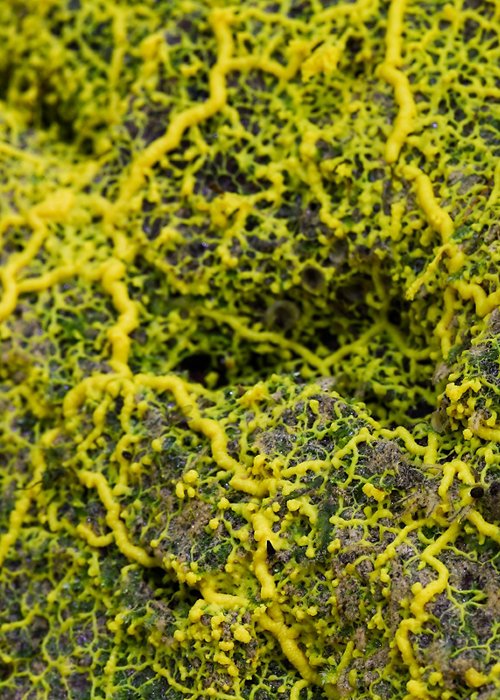Can you be intelligent without a brain? The answer is “in a certain sense, yes” and this is demonstrated by a strange organism that looks like yellowish gelatinous mould but that has nothing to do either with moulds or fungi… It is called Physarum polycephalum and it is related to amoebas, that is to say to those unicellular organisms without a precise form that advance in stagnant water extending arms similar to tentacles, called pseudopodia.
Physarum polycephalum is an organism formed by many amoebae fused into a single large cell with thousands of nuclei; it likes semi-darkness and humid environments and feeds on organic matter found in the undergrowth, amongst decaying foliage. It is therefore an organism that plays an important role in the recycling of nutrients. To the naked eye, it is difficult to perceive the movement of the Physarum because it is very slow: only an accelerated shot can show how the “mould” stretches out its pseudopodia in every direction in search of something to eat. This is why it is called polycephalum, a word that means “many heads”; in fact it is impossible to establish where this strange organism begins and ends. With its thousand arms, Physarum explores the environment and, when it finds food, wraps itself around it to absorb it one fragment at a time.
This “mould” is undemanding in terms of food and space, a few oat flakes and a dark, moist environment are all it needs to thrive even in the lab. Physarum is one of the organisms most widely studied in test tubes, observing its movements and… intelligence. It is a special form of intelligence, since this organism does not have a nervous system or even a brain. What, then, does its mind consist of? Physarum reacts to external stimuli, and this is not exceptional, as bacteria are also capable of this, but it is also able to remember, decide and teach. Here are a few examples.




